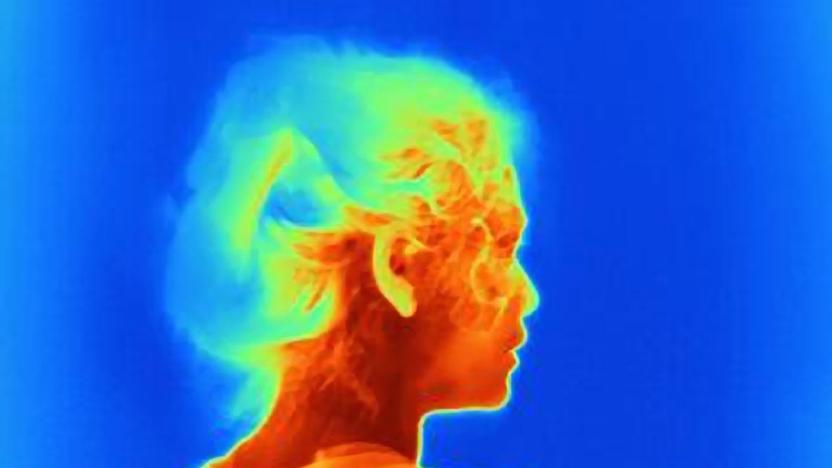ArgusII
Latest

Tomorrow's bionic eyes will have 'Predator' vision
Whether through illness or injury, 36 million people suffer from blindness worldwide, and until just a decade ago those afflicted had little chance of regaining their sight. In 2009, doctors at the University of Manchester implanted the first Argus II bionic eye in a patient. Now, 10 years later, the makers of the Argus II are trialing a more capable artificial-vision system -- one that's implanted directly into the patient's brain.

High-tech solutions top the list in the fight against eye disease
"The eyes are the window to the soul," the adage goes, but these days our eyes could be better compared to our ethernet connection to the world. According to a 2006 study conducted by the University of Pennsylvania, the human retina is capable of transmitting 10 million bits of information per second. But for as potent as our visual capabilities are, there's a whole lot that can go wrong with the human eye. Cataracts, glaucoma and age-related macular degeneration (AMD) are three of the leading causes of blindness the world over. Though we may not have robotic ocular prosthetics just yet, a number of recent ophthalmological advancements will help keep the blinds over those windows from being lowered.

British pensioner's central vision restored with Argus II 'bionic eye'
Second Sight's Argus II bionic eye has already helped hundreds of patients around the globe with a rare disease called retinitis pigmentosa (RP) to see again. And yes, that includes several Americans who've gotten the system after it was approved by the FDA in 2013. Now, doctors at the Manchester Royal Eye Hospital have proven that it also works on another kind of degenerative eye disease: age-related macular degeneration (AMD). They've recently attached an implant onto the retina of Ray Flynn, an 80-year-old retiree who had lost his central vision due to the condition. Unlike retinitis pigmentosa, which could occur in anyone regardless of age, macular degeneration is one of the most common causes of blindness in adults 30-years-old and above. Also, AMD takes away a person's central vision, while those with RP usually lose their peripheral sight instead.

FDA clears Argus II 'bionic eye' for sale in the US (video)
Those in the US suffering from blindness due to retinis pigmentosa (RP) will now be able to regain some vision bionically for the first time ever, thanks to Second Sight's Argus II retinal prosthesis. The device was just approved by the FDA for sale stateside after surmounting the same hurdle in Europe almost two years ago -- though it was first launched long, long before that. RP is a rare genetic disease that inflicts 100,000 or so Americans, destroying photoreceptors in the eye while leaving other cells intact. By implanting a device on the retina that receives a signal from the eyeglass-mounted camera, those cells can be stimulated as if receiving light, causing them to transmit an image to the brain. Due to the limited number of electrodes, patients would only be able to discern light or dark, but most have reported better functionality with the device -- being able to make out the shape of a curb while walking, or discerning between light, grey or dark colored socks, for instance. The Argus II has been certified by the FDA for "humanitarian use," meaning there's "reasonable assurance" that it's safe, and should start popping up in specialized clinics by the end of the year. [Photo credit: Associated Press]

Second Sight retinal prosthesis cleared for sale in Europe, a better one already in development
We'd bother with the obvious, but there's no sense in acting exasperated that this thing is finally shipping -- let's just be glad it didn't take a day longer, shall we? Second Sight, a California-based company aiming to help those with degenerative eye disease by way of technology, has finally seen its flagship product approved for "clinical and commercial use" in Europe. The product is the Argus II, and for all intents and purposes, it's a retinal prosthesis (read: implant) that can at least partially restore lost vision. It works a little like this: patients don the camera-laden glasses, where signals are grabbed and fed wirelessly to a chip implanted near ones retina. The information is beamed to around 60 electrodes that "stimulate retinal cells, producing light in a patient's view." According to Technology Review, "the process works for people with retinitis pigmentosa because the disease damages only the light-sensing photoreceptors, leaving the remaining retinal cells healthy." For now, the $115,000 device will only be available through a smattering of clinics in Switzerland, France and the UK. If all goes well, it'll be actively seeking FDA approval next year for use in the US of A, and a version with way more electrodes shouldn't be too far behind.



